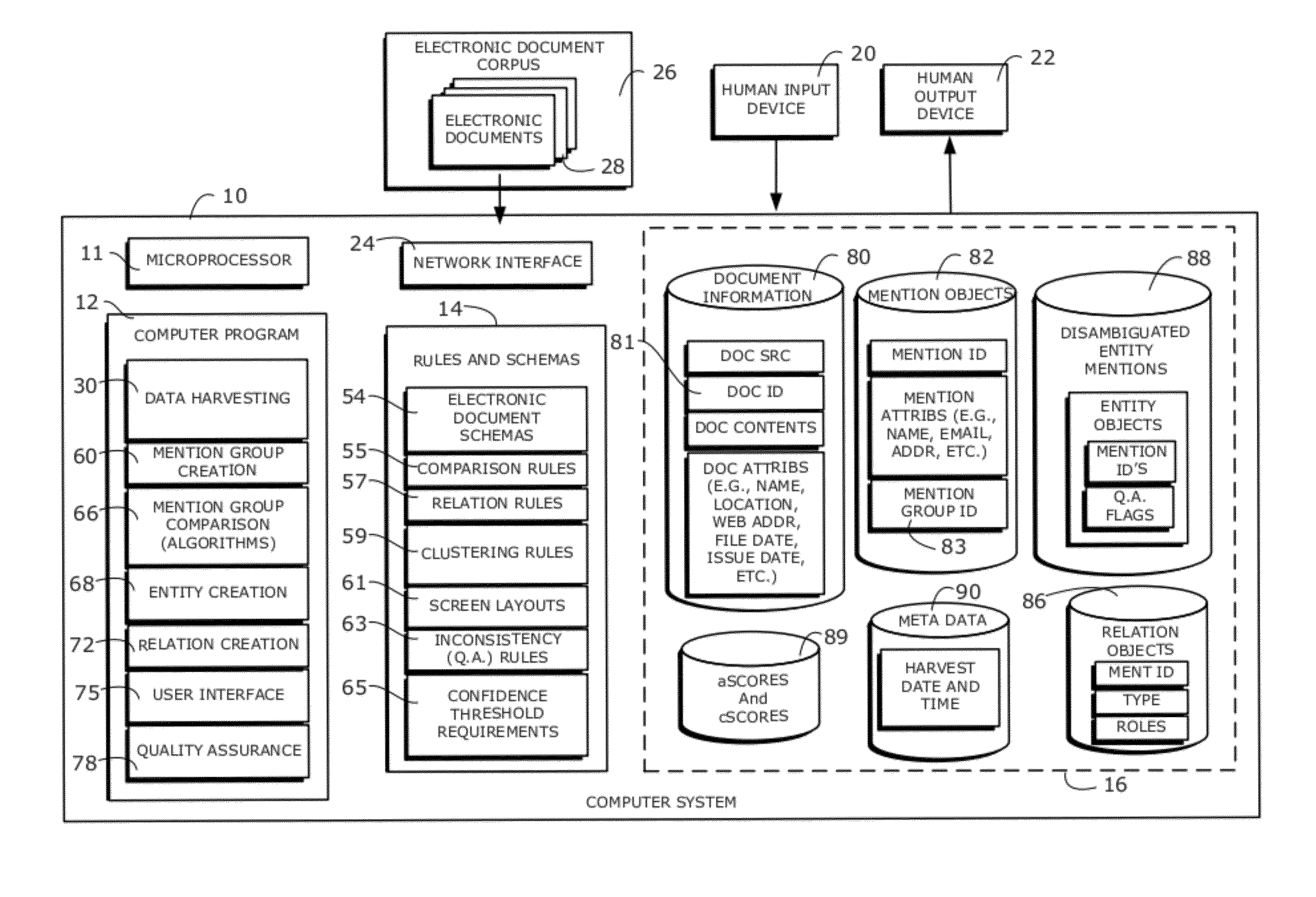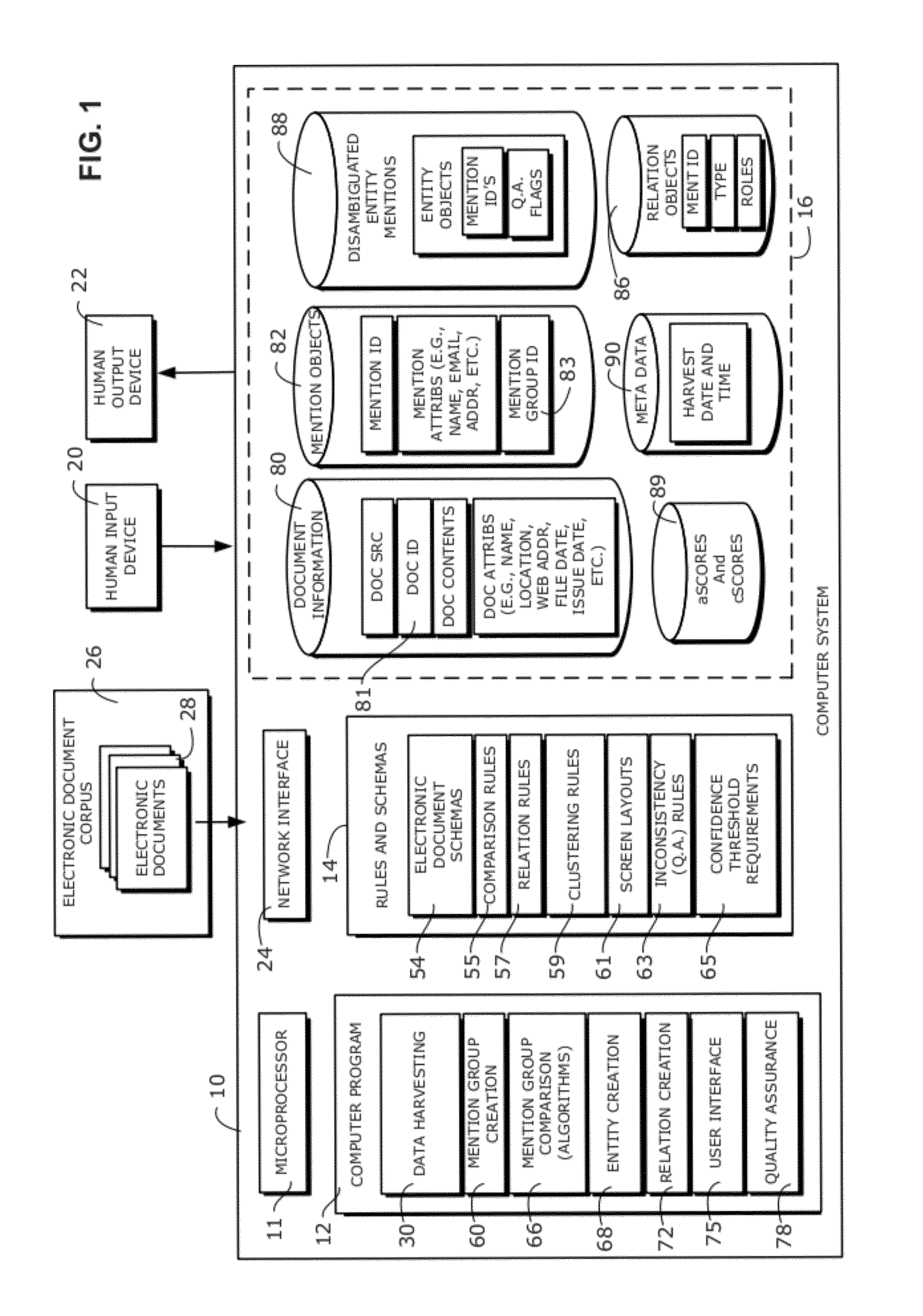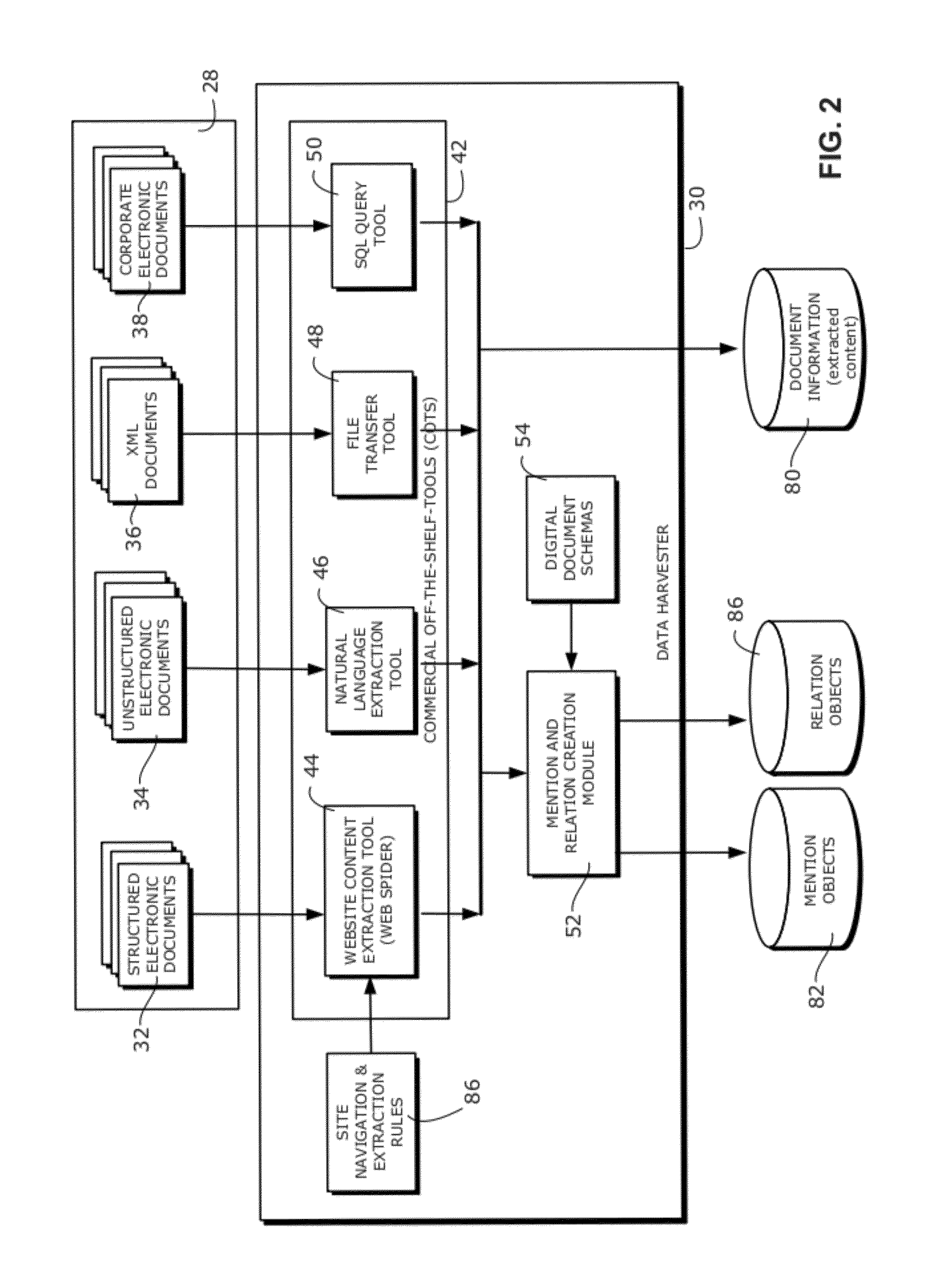[0010]As used herein, the term “electronic database” refers generally to a collection of data records, data tables, data items or data elements stored in a file or document on a computer system or network. In the context of the invention, databases are used to store, manipulate and manage, among other things, collections and groups of mention objects, entity objects, relation objects, source electronic document identifiers, algorithm scores, confidence scores, confidence thresholds, and so on. As is well known in the computer arts, the structure and organization of the data in an electronic database may be defined according to a well-known protocol, such as the Extensible Markup Language protocol (also known as “XML”), or a database schema. Thus, an XML document containing a multiplicity of XML tags delimiting groups or collections of entity objects and mention objects is considered one form of an electronic database of disambiguated entity mentions created by the invention. The arrangement, structure or protocol used by the electronic document or file comprising the electronic database (e.g., an XML document) enables users and / or other computer programs to quickly locate and process related objects in the electronic database.
[0015]According to another aspect of the invention, there is provided an apparatus for creating an electronic database of disambiguated entity mentions from a corpus of electronic documents, comprising a microprocessor, a data harvesting module, a mention group creation module, a collection of comparison algorithms and an entity creation module. The data harvesting module comprises program instructions that will cause the microprocessor to automatically extract the entity mentions from the corpus of electronic documents and parse the entity mentions to produce one or more mention objects. The mention group creation module comprises program instructions that will cause the microprocessor to automatically create one or more mention groups by automatically grouping mention objects together according to a distinguishing attribute common to a given class of mention objects, such as “last name” or “first name.” The collection of comparison modules include program instructions that will cause the microprocessor to automatically compare every mention object in each mention group with every other mention object in the mention group to produce a collection of comparison algorithm scores for every pair of mention objects in each mention group. The collection of comparison modules will also cause the microprocessor to generate an overall confidence score for every pair of mention objects in each mention group based on the collection of comparison algorithm scores for said every pair.
[0017]In some embodiments, the entity creation module produces a database of disambiguated mention objects by generating an XML document comprising a plurality of mention objects and entity objects, with XML tags defining and delineating which mention objects have been clustered together to form entity objects by the hierarchical fuzzy clustering algorithms described herein. In other embodiments, the entity creation module may have program instructions that cause the microprocessor to create one or more links for use in a relational database, which links serve to associate one or more mention objects in one table of the relational database, respectively, with one or more entity objects residing in the same or another table of the relational database. In other words, the entity creation module may be configured to create and arrange mention object identifiers and entity object identifiers in an XML document database or another type of database so that all of the mention objects that the system has determined should be associated with a particular entity are logically connected with each other. This may be accomplished, for example, by creating an XML document, such as the XML document example depicted below, wherein all the mention object identifiers associated with a particular entity are encapsulated by the appropriate computer-readable start and end tags for that particular entity. Such computer-readable XML document tags and relational database links provide a straightforward way for other computer programs to retrieve and display all of the mention and relation objects (i.e., references) that the system has determined, in accordance with the techniques and programmed modules described herein, should be associated with that particular entity.
[0028]The collection of comparison algorithms includes program instructions that, when executed by the microprocessor, will cause the microprocessor to compare each new mention object in a selected mention group with every other mention object in the selected mention group, according to the set of comparison rules, to produce a collection of algorithm scores for each comparison pair and then produces a confidence score for each comparison pair based on the collection of algorithm scores for that comparison pair. In this step, new mention objects are compared to every other new mention object, as well as every previously-existing mention object. However, previously-existing mention objects are not compared to other previously-existing mention objects, as such comparisons would have been previously performed in an earlier execution of the program. This reduces the time required to augment the database of disambiguated entity mentions so that it now accounts for (i.e., factors into the disambiguation results) newly-added documents containing newly-added references, entities and relations, and thereby increases the speed and usefulness of the system.
[0032]As will be described in more detail below, embodiments of the present invention can efficiently store and augment entity disambiguation results over time using a data processing mechanism called hierarchal fuzzy object clustering, which is a combination of hierarchal clustering, fuzzy logic and object comparison.
 Login to View More
Login to View More  Login to View More
Login to View More 


